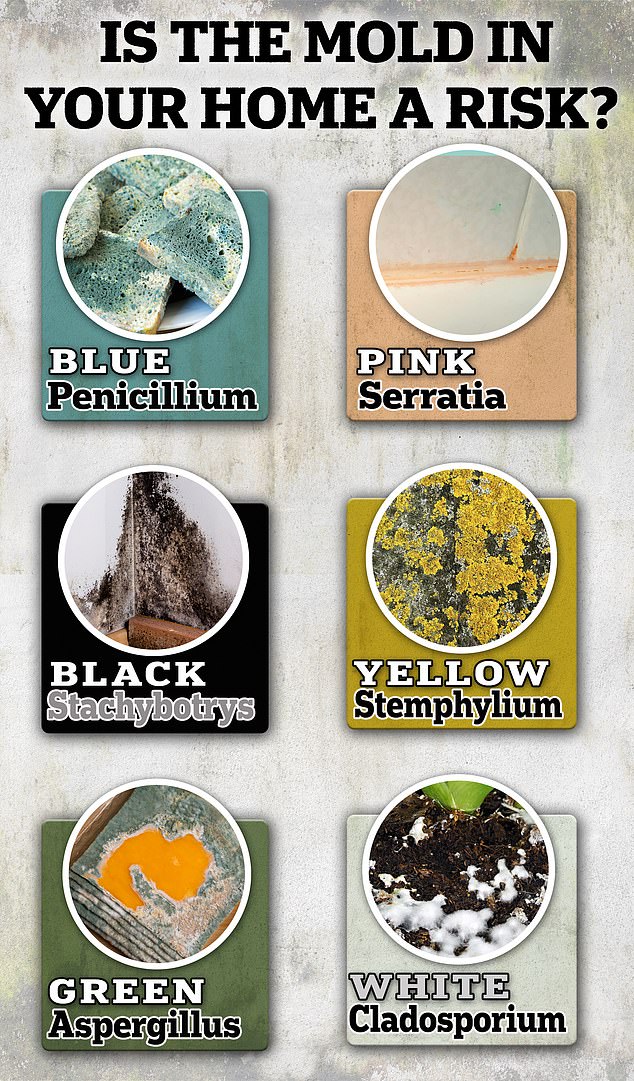Table of Contents
It’s something everyone fears seeing in their home or leftovers: mold.
The microscopic organism can invade any damp or wet surface, from shower curtains to sinks, refrigerators and even air conditioning units.
Experts say you shouldn’t beat yourself up if there are only small pieces of mold, but you can simply throw away rotten food or clean surfaces without any health impacts.
But Dr Nik Money, a fungal microbiologist who has spent decades researching mould, told DailyMail.com that homeowners should be alarmed if the moldy area is larger than a pizza box – about a square foot. Then you are likely to suffer from health problems.
It warned that mold covering such a large area would release large numbers of spores into the air, which could be inhaled and enter the lungs, causing symptoms including coughing and difficulty breathing.
Some experts have even suggested that mold in homes may be linked to cognitive problems and depression.
Mold is a major problem in US homes: growth has been found in more than 70 percent and 45 million homes have unhealthy levels of mold, as do schools, and 30 percent have problems in the roof which could cause mold in buildings.
While the fungus can pose a health risk anywhere it is found, experts warned that it was particularly concerning if it was in an air conditioning unit because this can release mold spores into the air, allowing them to spread further.
The above shows six types of mold you are most likely to find in your home.
Dr Money said: “There are well-publicised cases, particularly in the UK, where children have suffered and some have died from exposure to mould.”
If mold is discovered in your home, Dr. Money recommended using bleach or dish detergent to clean the surface or discarding items covered in the substance.
It is also important, he added, to wear a mask during the process to avoid breathing in the spores.
More than 75,000 people are hospitalized for fungal infections in the United States each year, and at least 7,000 die from them, although it is not known how many of these cases are related to mold in the home.
Below, DailyMail.com lists what each color of mold means:
black mold
Black mold, or toxic mold, colonizes multiple surfaces that have been wet for an extended period, including walls, air conditioning units, and bathrooms.
While color is not particularly important in determining the health risk posed by mold, Dr. Money said this is considered by some to be one of the riskiest types.
“Certainly, if it were my house, I would be concerned if I had a black, dusty area the size of a pizza box,” he said.
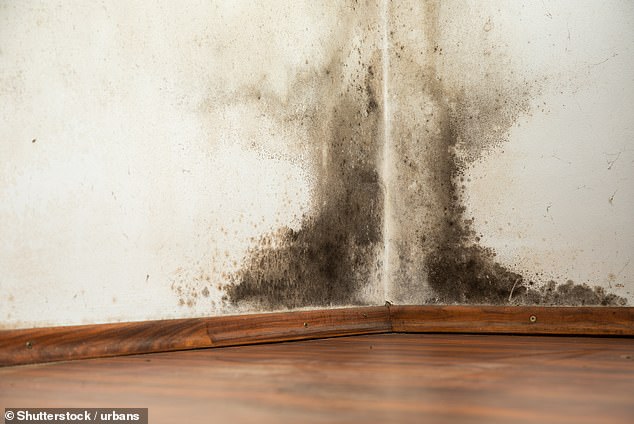
Black mold, or toxic mold, is one of the riskiest molds in homes because it can release spores and toxins, experts say. It is particularly worrying if it spreads to cover an area larger than a pizza box, as shown above.
The mold, called Stachybotrys, is sticky, making it difficult for its spores to spread into the air, limiting the risk.
But Dr Money warned that if it covered a large area in a house, it would release many spores that could cause complications for babies and children, whose developing lungs are particularly vulnerable.
In January last year, mold was blamed for the death of two-year-old Awaab Ishak in the UK, who suffered “severe swelling” in his airways and throat.
However, some of the slimy black mold found in areas such as showers may be a different type called Aureobasidium.
This yeast-like fungus can also cause respiratory allergies, but is very unlikely to threaten human life.
Bleach or dish detergent can remove both types of black mold, although in some cases the dark pigmentation may remain on the wall for some time.
Blue and green mold
These molds are among the most common to infest homes.
Blue mold is the Penicillium fungus, which led to the discovery of the powerful antibiotic penicillin, and is commonly seen on cheeses, but can also infest walls, ceilings, and other foods.
Cheese is safe to eat, experts say, because the acidity, salinity and temperature of the cheese prevent it from releasing toxins.
But it should still be removed from homes and other foods thrown away, experts say.
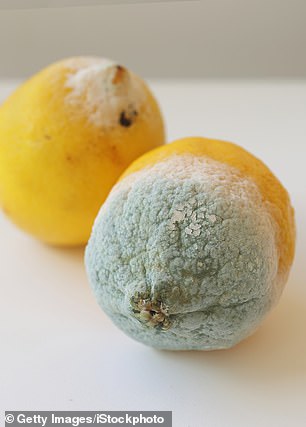
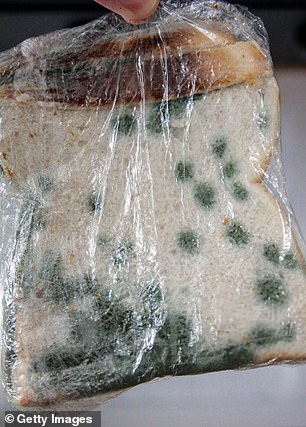
Dr. Money also said blue (left) and green (right) molds were concerning if they spread to cover an area larger than a pizza box. They are particularly common in homes.
Green mold is a type of mycelium fungus and often colonizes items in the refrigerator that have not been consumed for too long, as well as carpets.
Dr. Money again emphasized that the color of the mold was not important, but said that this mold could also grow to cover a large area, leading to health problems.
Experts have also warned that spores released by green mold can remain in the air for months.
If the lungs are regularly exposed to many mold spores, this can cause the immune system to overreact, causing asthma, cough, and chest tightness.
pink mold
Everyone has probably seen pink areas of mold in their bathrooms, building up around faucets, drains, or on shower curtains.
This is known as Serratia, experts say, which is actually a bacteria that grows in damp areas and feeds on residue from soaps and shampoos.
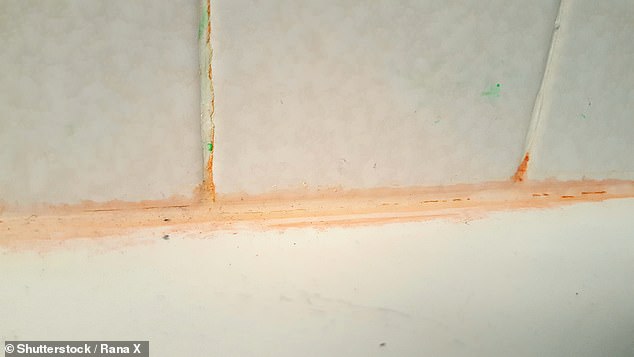
Many of us may also have pink mold in our bathrooms, which experts say can also pose a risk.
Experts say that in most cases it is harmless and can be easily cleaned with a sponge and a little dish detergent.
But if there are large amounts in the bathroom, the bacteria can become airborne and then inhaled, risking health complications.
Experts say the bacteria can cause urinary and respiratory tract infections, as well as wound and eye infections in some cases.
People who have compromised immune systems or underlying conditions are at greater risk for pink growth, but it can be removed with bleach or dish detergent.
Yellow and orange mold
Stemphylium and Epicoccum are two yellow and orange molds found in the home.
They can colonize paper, cardboard, and damp floors, as well as houseplants and carpets.
Unlike most molds, they need sunlight to complete their life cycle, so they are unlikely to be found in dark places.
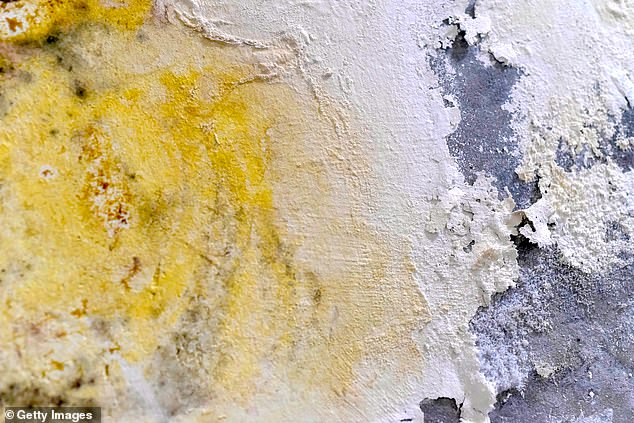
In some cases, the walls may be infested with yellow mold.
But they can fill the air with spores when large colonies emerge, potentially increasing someone’s risk of having an asthma attack.
However, using soap and warm water or bleach will likely remove growths from infested areas.
white mold
While there are numerous types of white mold, Cladosporium is one of the most common types that arises indoors.
Like Aspergillus, this type can be airborne and is typically found in damp, dark areas such as basements, bathrooms, or attics.
According to Healthline, it can also grow on carpets, vents, and even paper, as long as the conditions are right.
Most forms of Cladosporium are not dangerous to humans, but the fungi can still worsen asthma and allergies.
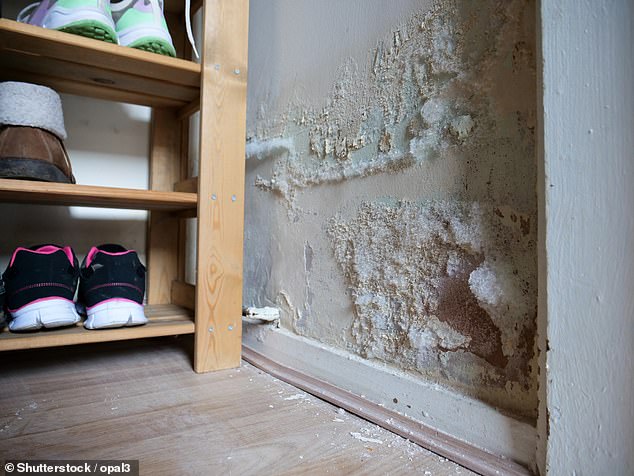
And white mold, shown above, can also emerge and infest some homes.
This coral-like species is a parasite of moths and cicadas that has often been used in pest control products.
Michael Taylor, a mold expert at Flinders University in Australia, previously told DailyMail.com: ‘So when you notice the world around you changing colour, you can marvel with your new knowledge at the microscopic wonders that live complex lives. next to yours.
Then maybe you clean it and give the fruit bowl a wash.

